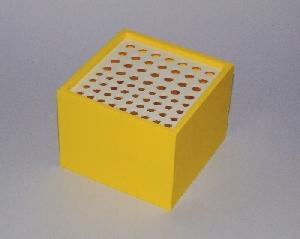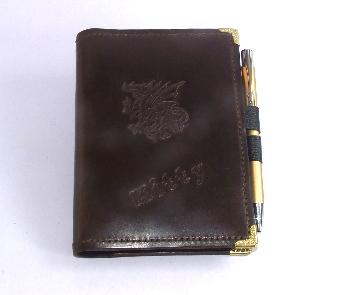-
Posts
5,926 -
Joined
Content Type
Profiles
Forums
Events
Blogs
Gallery
Everything posted by fredk
-
Forget drawers. The woodwork of the drawer takes up valuable space. Shelves with a bar across them. Hinge the bar at the bottom so it can drop down like a flap, but only to horizontal so it can act as extension to the shelf whilst you get things off the shelf. Bar hinges up after use and small catches hold it in place Use that wall space; open plan shelves up there, long lengths which can be partitioned to your needs as you progress Use the ceiling; in very old time houses they used to have a clothes drying rack attached to the ceiling. It could be dropped down for putting clothes on then via pulleys it was hoisted up out of the way. Use a similar idea to hang light weight leathers Don't forget power points; you can never have too many. But not at floor level. Bring them up to desk/worktop height. And build an open front box over them; to protect the plugs and stop too much stuff getting left in front of them and preventing you access to them Is that big square on the end wall a window? if it is shift your sewing area over to there. Make use of any daylight available
-
Why waste a very nice piece of hide? I use cheap dish washing sponges to apply antique, and also dye. The sponges cost me 10 for 50p [£0.50 = 5p each] I even cut them into pieces, maybe four. I just throw them away after use. With the sponge I can work the antique into the depressed areas very easily
-
Same has happened in Belfast and some other towns in N.I. We had a couple of really nice, hot, summers and the councils got rid of the covered places, redeveloped them into open air plaza type places. Bars and restaurants which were encouraged to open up there soon closed up, too cold and wet most days. Now the councils are wasting more public funds in schemes to correct their mess up
-
The OIrish have a few national foods or dishes but they/we don't eat any specific one on St.Paddy's day Some national foods; Colcannon - mashed potato with diced up white cabbage through it. Some people cook the cabbage, I like it uncooked, served hot with loads of butter, often served up with some thick rashers of bacon or just on its own Champ - mashed potato with scallions, aka spring onions, milk and lashings of butter mixed up, served with just about any meat or just on its own Potato bread, a bread made on the griddle with mashed potato mixed into the batter, served hot, either straight from the griddle, toasted or fried, with loads of butter Soda bread, a bread made on the griddle, served hot, fried or toasted or straight from the griddle, with loads of butter Irish/Ulster fry - 2 each of soda bread, potato bread, fried egg, pork sausage, thick bacon slices and loads of butter for the breads and eggs [no tomatoes or baked beans, these are added for the English visitors] Irish Stew - lamb or mutton stewed with potatoes, parsnip, turnip and carrots. A thick stew, served with soda bread on the side, not forgetting the butter Drinks; Tea Whiskey Lager beer Stout, aka Guinness Regular beer There'll be local parades, but most of us will avoid them [usually riots during and after them] and just get on with things as another day
-
I have several tool boxes, the sort meant for car mechanics, which hold the various tools for leather crafting. These sets are divided into, sewing, cutting & marking et cetera. The top set of drawers on one unit is devoted to my alphabet & 3D/2D stamps I keep handled stamps in three of these boxes meant for paint brushes. They reside on the top, at the back, of one of my work benches The stamps are divided into their code numbers and put in these. I can see the design of the stamp easily.
-
Studying the video; the guy's watch, is at about 4.25.15 at video time 7.54 when he forces the wood block into the main pouch, the watch is still at 4.25.?? at video time of 8.09 when he is boning the shape, he started the shaping at video time 8.05. None of the the items on the bench, other than the mallet, has moved during this sequence. Therefore that sequence may have been filmed in real time or a full 12 or 24 hours later But there is an edit cut at video time 8.04 thru 8.05 to 8.06 At 8.14 we see the worker polishing up the case, but the wood former is still enclosed. A cut-away to the badge, 8.24, then we see the case being put in the display cabinet, 8.27. An out-of time edit; In between, was the leather drying out?
-
I wonder if he's just relying on the stretch of the veg tan to hold the shape, or is there a step we do not get to see [the trade secret] where the veg tan is slightly dampened before the wood block is forced in? I've not done anything I can think of which I forced into shape dry I wonder if RockyAussie has any thoughts on this?
-
A. you should wait longer for a response. Not everyone is on here 24/7 b. A link to what you are talking about would be helpful, then we examine it and tear it apart
-
Thats excellent I also use FIMO/Sculpey, but for the occasional small stamp We need to edumacate the heathens on here about polymer clay,
-
Not throwing any doubts about Frodo doing this, but many others have done the same and its become a common joke Not too long ago I told my #1 son the story about Benjamin Franklin. He was a book publisher as well as a kite flyer. The story goes; a customer asks Franklin's assistant how much for a certain book - $1. Thats too dear, get Benjamin out. BF comes out from his printing. How much for this book? $1.25. But your assistant said $1. Yes, and now Its $1.50. A moment ago you said $1.25 and now you want $1.50! No, now I want $1.75, the longer you keep me here away from my work you'll pay for my time. The man ended up paying $2 for that book My #1 applies that principle to his time-wasting customers since hearing that story, but he adds on £20 to £100 depending on how busy he is Sorry for the deviation but I just had to share that
-

Glasses case
fredk replied to Spyros's topic in Purses, Wallets, Belts and Miscellaneous Pocket Items
Another leather things supplier https://www.ivan.tw/collections/digital-download-pattern?utm_campaign=newsletter-custom-03d8ac177d3e41469c91c0dd638a8c49&utm_medium=email&utm_source=seguno -
yes, a sewing machine leather needle, at least the ones I have, are shaped like glovers' needles, triangular in cross section shape, or like a knife blade, between the eye and the point. Look at the needle under a magnifier. The edges of that triangle, or blade, should be sharp as should the point. Fabric needles are just fairly sharp as it doesn't take much sharpness to go through 2, 3 or 4 layers of woven cloth because the needle can push through the weave, but a leather needle needs to cut a hole I just use a very fine sharpening stone to give the needle a few swipes to sharpen it
-
and sharpen the edges of the leather needle. I find most are blunt and just the point is slightly sharp. Do a few needles and replace every-so-often with a fresher one. Then sharpen again that replaced one
-
I just discovered that Tandy does a stitching chisels adapter for use in their press; https://www.tandyleather.world/products/press-die-for-hand-press-diamond-chisel for use with their set of inter-changeable chisels https://www.tandyleather.world/products/diamond-hole-chisel-set When I'm rich again I might buy the adapter and chisels sets. I have the press already
-
For keeping the holes on your work piece equidistant from the edge whilst cutting or drilling or punching the holes you can use a magnetic thingy, like this one : I use one (a large one, top picture) on my sewing machines. It sticks to the metal bed and you just run one edge of your work piece along it so that your stitching, or holes in this case, are equidistant from the edge. These magnet thingies come in different shapes and sizes and cost just a few $$ (try the sewing section of Hobby Lobby, or on ebay or Amazon) PS. I'm working on an idea for a holder for my Tandy Press to hold regular type diamond awl blades
-
Are the stitching holes still intact and useable? If so, you could use a curved needle. I used to use a curved needle to repair medieval style shoes for my team. With the shoes I could not reach the interior very well so I stitched through the sole and vamp with a curved needle. btw its easy to make any needle a curved one
-
Please note, or remember, that using any solvent to clean un-dyed / raw leather will remove its natural oils so it will need a feeding of nfo at some time
-
I like to wipe over the raw leather with one of these; cellulose thinners, Fiebings Dye Prep, isopropanol alcohol or acetone. Which one depends on which come to hand first. Any one of them will de-grease the surface and some of them will remove marks such as dirt from the surface. After using a prep, I let it dry then wipe the leather over with a damp sponge a couple of times before attempting to dye it Chrome vs veg - chrome tan won't take a stamp impression very well nor wet mould
-

Tried A New Wallet
fredk replied to AzShooter's topic in Purses, Wallets, Belts and Miscellaneous Pocket Items
I can see both photos very clearly Nice choice for the exterior, but I'm not shure on your choice for the interior. It kinda doesn't go with the exterior. and I think you need to work on your edges -
Cut through the leather, get a clean edge. Chrome tan will (usually) have a blue-ish line in the centre of the cross-section
-
I always dye the back of the belt the same colour as the front. Its the accepted here
-
I have pre-dyed veg tan which I bought from Le Prevo. IMO its brilliant. If you only need the colours you can get it in. In my case some shades of brown. No fussing with dyeing, cleaning up, potential bleed, et cetera. I don't really do any tooling but the leather takes a stamp impression very well In my case I got the leather in one of Le Prevo's discount sales. It was still a bit dearer than the non-dyed but it saves more time value than the extra cost that it is. I mean, think of the time you need to spend preparing the leather for dyeing, dyeing time, space taken up whilst it dries, cleaning up you dye area - with this, just cut a piece off and you're good to go This book cover was made from some of the pre-dyed
-

Hand grips for my bike. Step by step.
fredk replied to pzarkov's topic in Motorcycles and Biker Gear
Nice -
I apologise. I just learnt this evening that McDonalds has about 850 places in Russia and that McD owns the majority of them. How many the report did not say. Anyway, I've not had anything from a McD for about 2 years. The only thing I did get regularly was either a Hot chocolate drink or a Cappuccino coffee, so boycotting them is easy for me
-
The blade in question has been claimed by general leather workers, shoe-makers, cobblers, glaziers and carpet fitters I have one, hardly ever use it though





